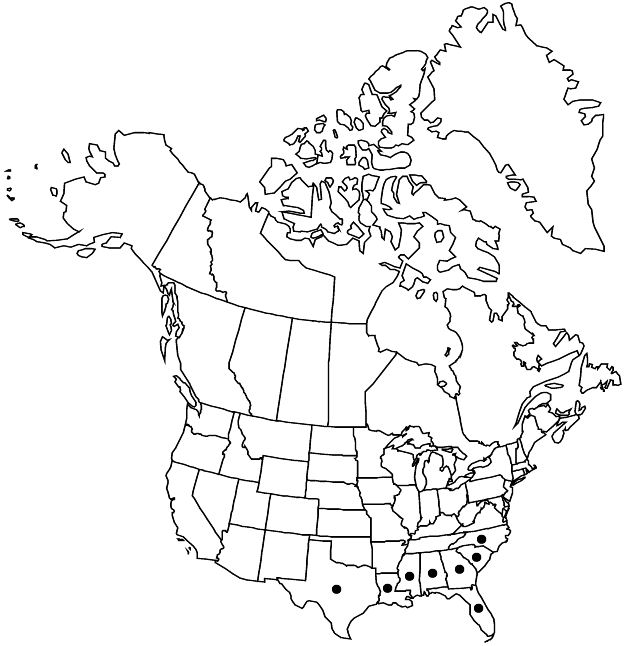Croton punctatus
Collectanea 1: 166. 1787.
Shrubs, 3–10 dm, monoecious or sometimes appearing dioecious. Stems trichotomously branching, stellate-hairy to stellate-lepidote. Leaves not clustered; stipules absent; petiole 1–4 cm, 1/2 to equal blade length, glands absent at apex; blade broadly elliptic to suborbiculate, 2–5 × 1.5–4 cm, much less than 2 times as long as wide, base rounded to truncate, margins entire, apex obtuse to rounded, abaxial surface pale grayish green, stellate-lepidote, adaxial surface slightly darker green, stellate-lepidote. Inflorescences unisexual or bisexual, racemes, 1–4 cm, staminate flowers 3–7, pistillate flowers 1–3. Pedicels: staminate 2–4 mm, pistillate 0–1 mm. Staminate flowers: sepals 5–6, 2.5 mm, abaxial surface stellate-lepidote; petals 0; stamens 10–13. Pistillate flowers: sepals 5, equal, 3–3.5 mm, margins entire, apex incurved, abaxial surface stellate-lepidote; petals 0; ovary 3-locular; styles 3, 1–2 mm, multifid, terminal segments 12–24. Capsules 5–8 × 7–9 mm, smooth; columella 3-winged. Seeds 4.5–6 × 3.7–4.5 mm, dull. 2n = 28.
Phenology: Flowering year-round.
Habitat: Beaches, dunes.
Elevation: 0–20 m.
Distribution

Ala., Fla., Ga., La., Miss., N.C., S.C., Tex., e Mexico, West Indies, Central America, n South America
Discussion
A report of Croton punctatus from Pennsylvania apparently was based on a transient appearance on ballast (E. T. Wherry et al. 1979).
Selected References
None.
Lower Taxa
"/2" is not declared as a valid unit of measurement for this property."connate" is not a number. "distinct" is not a number.